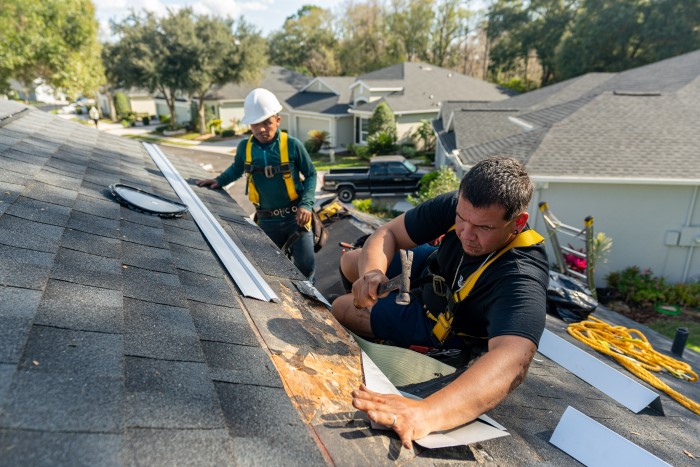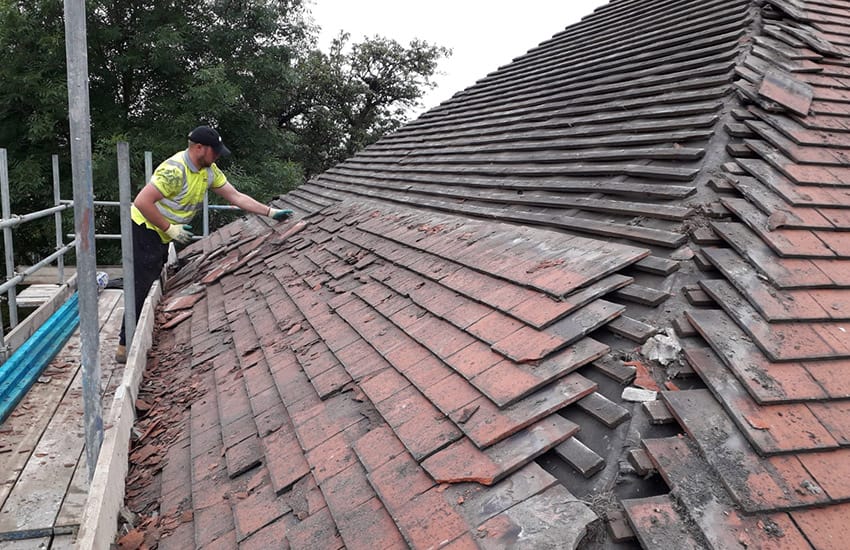Oahu Roofing: Dependable Roofing Solutions for Houses and Businesses
Oahu Roofing: Dependable Roofing Solutions for Houses and Businesses
Blog Article
Checking Out the Different Types of Roofs: Which One Is Best for Your Home?
When thinking about the myriad types of roofs available, it is important to examine just how each alternative straightens with your home's special requirements, consisting of climate problems, aesthetic choices, and structural capability. From the timeless gable roof covering that efficiently networks rain to the modern flat roof offering metropolitan versatility, each design offers distinctive advantages and challenges.
Saddleback Roof
Saddleback roofs, defined by their triangular form and sloping sides, are a popular option amongst home owners seeking both visual allure and functionality. This roofing style properly allows for reliable water drainage, decreasing the threat of water merging and succeeding damage. Additionally, the steep slopes create ample attic room, which can be utilized for storage space or perhaps transformed into living areas.
One of the main advantages of saddleback roofs is their ability to hold up against severe climate condition. The style assists in decreasing wind resistance, making them especially ideal for areas prone to storms. In addition, saddleback roofs can be built making use of a selection of products, including tiles, tiles, and steel, supplying homeowners with flexibility in layout and spending plan.
From a building point of view, gable roofing systems can boost the visual charm of a home, providing a ageless and traditional appearance. They can match numerous architectural designs, from typical to contemporary designs. However, it is important to consider prospective disadvantages, such as the sensitivity to snow accumulation in colder climates. In general, saddleback roofs stay a favored choice because of their equilibrium of functionality and style, interesting a vast array of house owners.
Flat Roofs
While usually forgotten for more traditional roof covering styles, level roof coverings offer unique advantages that provide to certain building needs and modern design preferences. These roofings are identified by their very little pitch, enabling efficient use area, specifically in urban settings where maximizing square video is essential.
One significant benefit of level roof coverings is their convenience. They can be utilized as extra space, such as roof yards, outdoor patios, or photovoltaic panel installations, enhancing the functionality of a home. In addition, level roof coverings are usually easier and more secure to navigate during maintenance, promoting fixings and evaluations without the challenges positioned by steep inclines.
Level roofings can also be more cost-effective in regards to materials and setup. With an easier layout, they typically need fewer resources, equating right into lower labor expenses. However, it's critical to think about drainage and waterproofing, as level roof coverings can be prone to pooling water otherwise appropriately made.

Hip Roof Coverings
Hip roof coverings stand out for their elegant layout and structural integrity, making them a prominent selection among home owners. Identified by slopes on all four sides, hip roof coverings provide a healthy aesthetic that enhances different building designs - roof repair oahu. The balanced nature of these roof coverings helps to distribute weight uniformly, improving stability and sturdiness
Among the essential advantages of hip roofs is their ability to hold up against severe weather. The sloped surfaces promote reliable water drainage and snow drainage, decreasing the danger of leakages and structural damages. Additionally, the design minimizes wind resistance, making hip roof coverings less at risk to wind uplift compared to click site other roofing types.


Lost Roofings
Shed roof coverings, in comparison to the intricacy of hip roofs, use a structured and minimal layout that attract contemporary visual appeals. Characterized by a single sloping surface area, shed roofings are commonly used in modern design, garden sheds, and various other functional structures. This simplicity not just boosts aesthetic appeal however also enables efficient water drainage, making them suitable for numerous environments.
Among the primary advantages of shed roofing systems is their cost-effectiveness. With fewer products required web link and a simple setup process, house owners can conserve both money and time. The layout also allows the unification of huge windows or skylights, promoting all-natural light and producing roomy interiors.
Nevertheless, it is vital to consider the prospective disadvantages, consisting of look at here now restricted insulation choices and the demand for cautious style to prevent excessive warmth build-up. Furthermore, lost roofings may not blend perfectly with conventional design, which could be a problem for some house owners.
Inevitably, dropped roofing systems offer a useful and elegant roof covering service for those seeking modernity and performance. When selecting a roofing type, reviewing individual aesthetic preferences and functional needs will certainly guide house owners to the finest option for their one-of-a-kind demands.
Mansard Roof Coverings
Mansard roof coverings, identified by their distinctive four-sided design, are a characteristic of French style that incorporates elegance with performance. This architectural design features 2 inclines on each side, with the reduced incline being steeper than the upper one. The distinct setup enables for extra living area in the upper levels, making it an excellent choice for house owners seeking to optimize functional location without broadening the structure's footprint.
Among the considerable advantages of a mansard roof is its convenience. It can be adjusted to various building designs, from standard to contemporary, improving the aesthetic charm of any type of home. Additionally, the ample space produced under the roof can easily suit dormer windows, which enable for natural light and air flow, further improving the comfort of the living area.
Nevertheless, possible house owners need to consider the maintenance needs connected with mansard roofs. The steep inclines can lead to increased wear from weather exposure, requiring normal examinations and repair work. Additionally, installation expenses might be greater compared to simpler roofing system styles due to the complexity of building. Ultimately, a mansard roof can be a superb selection for those prioritizing style and area.
Conclusion
To conclude, the selection of an ideal roof covering kind pivots on private requirements, environment considerations, and aesthetic choices. Each roof design provides unique benefits, such as the effectiveness of saddleback roofs, the contemporary allure of shed roofs, and the security of hip roofing systems. Additionally, flat roofs offer practicality for city environments, while mansard roofing systems supply added space despite higher setup costs. Eventually, a detailed assessment of these elements will certainly guide property owners in making a notified choice.
From the traditional gable roof that efficiently channels rain to the modern flat roof covering offering metropolitan adaptability, each design presents distinct benefits and obstacles (roof repair oahu). Furthermore, the style reduces wind resistance, making hip roofs less at risk to wind uplift contrasted to various other roof types
Lost roofings, in contrast to the intricacy of hip roofs, use a minimal and streamlined design that allures to modern-day appearances. Each roof covering style presents one-of-a-kind benefits, such as the effectiveness of gable roofs, the modern-day appeal of shed roof coverings, and the stability of hip roofing systems. Level roofing systems supply functionality for urban atmospheres, while mansard roofing systems provide extra living space in spite of greater setup prices.
Report this page